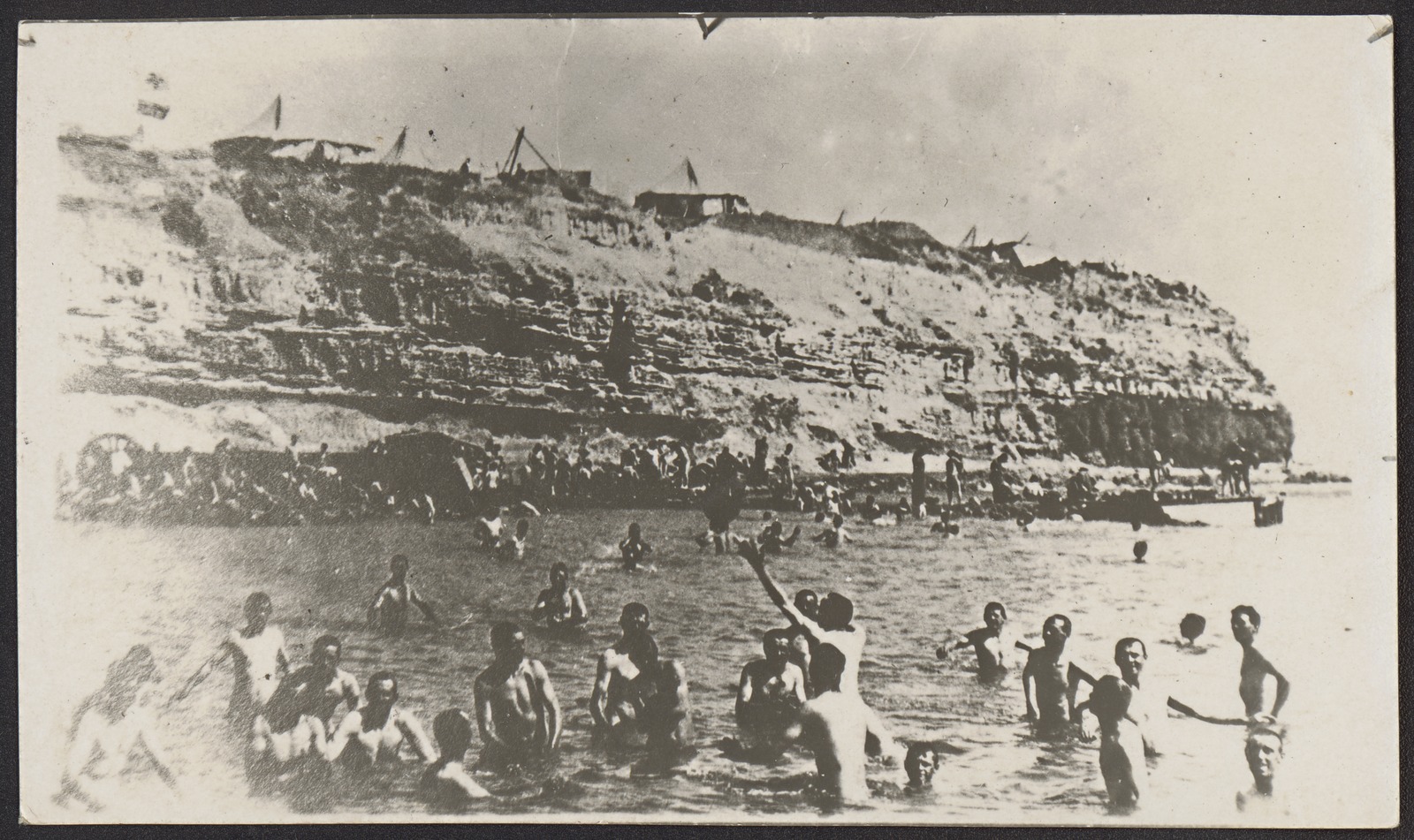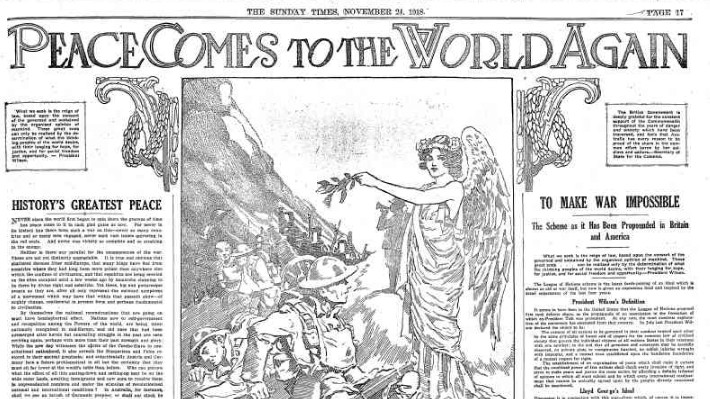Our Library has a vast collection of material relating to World War I including many original diaries and photographs. Two notable diaries are those written by (Victor) Rupert Laidlaw and Alice Kitchin.
Rupert Laidlaw was 21 when he joined the newly formed Australian Imperial Force (AIF) in August 1914. In September, Nurse Alice Kitchin, joined the Nursing Service. Both were eyewitnesses to history. Their diaries speak eloquently of their experiences, and reflect the horrors of the conflict.

On 24 April, 1915 Private Laidlaw was aboard a troop ship approaching the Dardanelles. The next day he was part of the vast allied invasion force landing at Gallipoli.

25 April 1915
Shrapnel was bursting everywhere and it was making an awful row. Now we could also hear in the distance the rifle shots, they just sound like croaking frogs to me. … We lost a terrible number of men landing as the Turks were quite prepared for us. …. The country we are fighting in is awful. It is very mountainous and snipers get in among the trees and do their deathly work.1
Nurse Kitchin was stationed at the 1st Australian General Hospital in Cairo when the Gallipoli wounded began arriving.
Treating so many severely injured and dying men was a desolate business. Each day brought more reports of deaths of friends.
2 May 1915
We were sorry to hear that Lieutenant Legge had gone, but by this time perhaps all the men we looked upon as friends have been blotted out of this existence. 2
Alice Kitchin found Egypt a strange and beautiful place, enabling momentary escape, but the devastation of the war was ever present.
11 May 1915
The morning star rises just outside one of our ward windows and it and the morning light over the dry desert sand are lovely in the dawn and makes up for the depression that is the usual accompaniment of night duty. I love this old Egypt so much and shall be sorry to leave it and always hope I may come back to it again.
I asked one man who came in from the front where he had come from and he said he thought it was from “Hell”.…… I am afraid our losses have been heavy, and the lives lost too many for the positions gained. It seems such a reckless waste of useful human life. 3

30 May 1915
Yet another very hot day and another glorious night. I wonder on what scenes of horror and death at Gallipoli this same moon looks down upon, how many broken lives and hearts all over this sad old world. 4
Even at Gallipoli, it was tempting to follow leisure pursuits from home. The soldiers enjoyed swimming in the sea despite the dangers of the large Turkish gun Beachey Bill.
2 September 1915
… went down with Harry to draw rations, had a swim at the same time. Just as we were coming out Beachey Bill opened fire with shrapnel, we all made a hurried exit for cover, but one poor beggar caught one right through the heart, and died immediately, he was a member of the 6th Battalion, such is the ‘Irony of Fate’, this lad was alive and well a minute ago, now he’s dead. 5
 Australians bathing at Cape Helles, Turkey. Photo by Victor Rupert Laidlaw; H84.356/38
Australians bathing at Cape Helles, Turkey. Photo by Victor Rupert Laidlaw; H84.356/38
The war, initially greeted as an adventure by many, with the promise of being home by Christmas, ground on year after year.
As the casualty lists grew the war became more and more divisive. Fewer men were volunteering and Prime Minister Billy Hughes was desperate to raise the troop numbers.
In 1916 a plebiscite was held to decide whether conscription would be introduced. This precipitated fiercely fought political campaigns between pro and anti-conscriptionists.
The 1916 plebiscite was narrowly voted down and a second plebiscite in 1917 was more decisively defeated.

On 11 November 1918, the world was finally at peace again with the signing of the Armistice.
For Nurse Alice Kitchin the end of the war was met with a sense of relief as much as elation. Her thoughts quickly turned to all those lives lost.
12 November 1918
A great crowd everywhere but not any wild hilarity…. the tragedy of war still seems to lurk somewhere close in the background. We are still too near all the great sorrows and heart breakings to feel great rejoicings and one sees as many sad faces as merry ones. I feel more like weeping myself. 6

Rupert Laidlaw received a facial wound in July 1916. Following treatment in England he returned to Australia in February 1917. He died in 1984, aged 90.
Following the Armistice, Alice Kitchin attended a course at the Royal Sanitary Institute, London, finally returning to Melbourne on 23 October 1919. She died in 1950 at age 77.
Further resources
Diaries and photographs
As mentioned above our Library has a vast collection of material relating to World War 1 including many original diaries, photographs and published personal narratives.
Research guide
We also have an extensive Australians in World War I research guide that identifies the best resources both within our Library and at other agencies.
Ephemera
Our Riley & ephemera collection contains many posters and flyers from the conscription campaigns of 1916 and 1917. Material donated by Fred Riley is the basis for this collection. Fred was involved in the anti conscription campaigns. See his note on this leaflet which escaped seizure by the authorities and was accessioned by the Library at the time most of these leaflets were removed in a raid on the Australian Peace Alliance offices.
Library blog posts
See some of blog posts relating to the First World War and our Library collections.
Our databases
First World War – a selection of documents, images, maps and more relating to World War I.
Trench Journals and Unit Magazines of the First World War – a collection of rare magazines by and for servicemen and women of all nations during the First World War.
These databases are available to all Victorian access members.
Other agencies
The National Archives has digitised records of Australian servicemen and women from World War I.
The Australian War Memorial has a significant collection including the digitised: Official history and unit diaries.
References
- Laidlaw, VR, 1914, Diaries of Private Victor Rupert Laidlaw, MS 11827, Australian Manuscripts Collection
- Kitchin, AE, 1914, Papers of Alice Kitchin, 1914-1919, MS 9627, Australian Manuscripts Collection
- As above
- As above
- Laidlaw, VR, 1914, Diaries of Private Victor Rupert Laidlaw, MS 11827, Australian Manuscripts Collection
- Kitchin, AE, 1914, Papers of Alice Kitchin, 1914-1919, MS 9627, Australian Manuscripts Collection


Have all of Rupert’s negatives need to get them redone
Wow that’s fantastic Brett, what a collection.